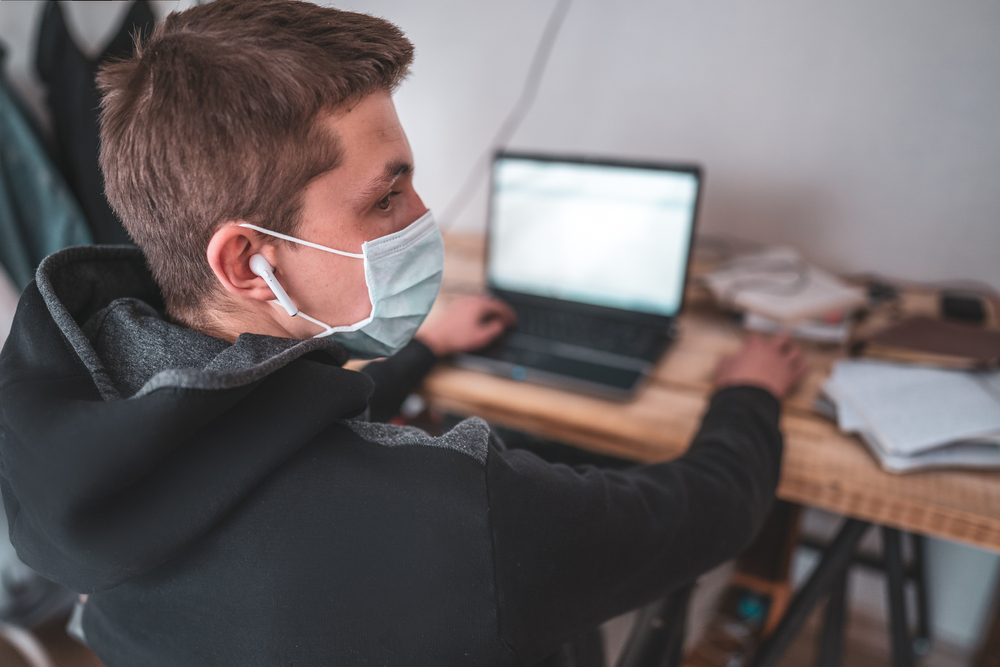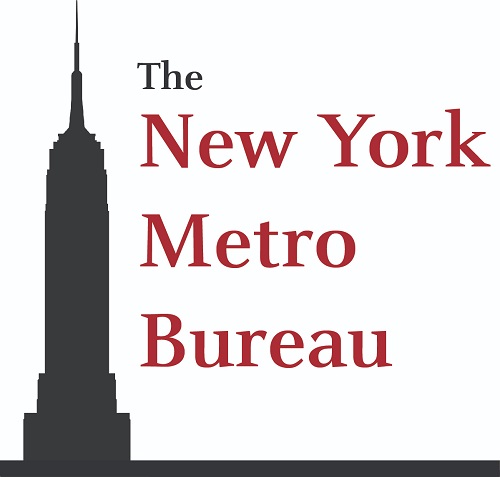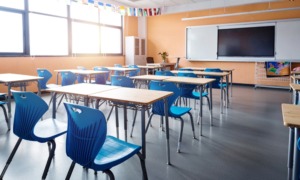 ALEXANDER_SAFONOV/SHUTTERSTOCK
ALEXANDER_SAFONOV/SHUTTERSTOCK
New York City must finish installing Wi-Fi in shelters for homeless families and domestic violence victims by Aug. 31, according to a settlement reached this week in U.S. District Court in Manhattan.
The order will benefit more than 11,000 homeless children living in some of the 240 family shelters across the city’s five boroughs — which count a total of 110,000 homeless students — who’ve struggled with remote learning during the Covid-19 pandemic.
“Our sense all along was without suing the city they were not going to get this done,” Susan Horwitz, supervising attorney of The Legal Aid Society’s Education Law Project, told the Juvenile Justice Information Exchange (sister publication of Youth Today) last week.
 In November, Horowitz’s organization and Milbank LLP filed a class-action lawsuit on behalf of the Coalition for the Homeless and several homeless families, arguing that the city was not giving all shelter residents access to reliable internet service. As of April 1, the city had installed Wi-Fi in about 75% of shelters, according to a press release from the Legal Aid Society, which, nonetheless, remained concerned about when the remaining shelters would get Wi-Fi.
In November, Horowitz’s organization and Milbank LLP filed a class-action lawsuit on behalf of the Coalition for the Homeless and several homeless families, arguing that the city was not giving all shelter residents access to reliable internet service. As of April 1, the city had installed Wi-Fi in about 75% of shelters, according to a press release from the Legal Aid Society, which, nonetheless, remained concerned about when the remaining shelters would get Wi-Fi.
In late October, New York City Mayor Bill de Blasio announced that the city would put Wi-Fi in 27 “priority shelters” by winter and extend their efforts to the remaining family shelters by the end of summer 2021.
During a Tuesday press conference, De Blasio said Wi-Fi should be installed in family shelters as soon as possible.
“We have all agreed from the beginning we want every shelter to have full Wi-Fi capacity and, in the meantime, we reached out to families and kids and made sure that they had alternatives because we wanted to keep kids learning,” de Blasio said. “Some of these buildings are obviously real challenges, and logistics have been a challenge. But we all agree that we need to get it done.”
The number of New York City public school students who are homeless has remained relatively consistent for the past five years. Of those children, 32,700 currently reside in homeless shelters and 73,000 are “doubled-up,” staying with friends or relatives in often cramped and otherwise unsuitable conditions, according to Advocates for Children of New York, whose 2020 report estimated that 110,000 homeless students were enrolled in New York City public schools.
Student homelessness acute in the Bronx
On average, across New York City’s five boroughs, one in six of public school students is homeless. In City Council District 15, covering a section of the Bronx that has roughly 168,000 residents, more than a quarter of the students either have been cycling through shelters or are on the verge of homelessness, said Troy Blackwell, who lost a write-in candidacy during a March 23 special election for that council seat.
“If a child is going home and is not sure they are going to have dinner or food on the table that night, if a child is going home to a neighborhood that is ravaged by gun violence, or if a child doesn’t even have a home and is in and out of the shelter system and doesn’t have a laptop, how can we expect these children to show up to school and be there best selves and be set up for success?” Blackwell said.
Among other proposals, he had suggested increasing subsidized rental assistance vouchers granted to people who are leaving shelters to move to, presumably, more stable long-term housing; a second Bronx drop-in center for 14- through 24-year-old homeless persons needing a safe place to rest and shelter. (Three drop-in centers are in Manhattan, which has about the same number of persons in that age group as the Bronx does.); and more budgeted funds to get Wi-Fi installed in every shelter.
Despite progress in getting Wi-Fi in homeless shelters, many students remain disconnected from remote classrooms for several other, sometimes, unclear reasons, said Jennifer Pringle, director of the New York State Technical and Education Assistance Center for Homeless Students. She said most family shelters did not have Wi-Fi prior to the pandemic.
“There is a large number of students who are currently identified as homeless who have either not connected with school or not regularly connected with school,” Pringle said. “A lot of outreach needs to be done to re-engage students.”
School-issued iPads must be in good repair
While the school officials distributed internet-enabled iPads last spring, Pringle said there’s been a “whole host of issues” with the devices. Some students drift in and out of their classes due to a poor connection, freezing midway through a lesson; while others, including students for whom English is their second language, have struggled to download software and school assignments.
In addition to providing Wi-FI, the settlement requires school officials to reach out to families within one school day of receiving a report that a tablet is not functioning correctly and to promptly replace it, if need be, with a well-working tablet.
By law, Pringle said, students have a right to receive a “free, appropriate public education.” That provision is listed in the McKinney-Vento Act, mandating that elementary and secondary school students without a “fixed, regular and adequate nighttime residence” have educational services comparable to the ones provided to their permanently housed peers.
Wi-Fi access is an essential aspect of meeting that legal threshold, especially during a pandemic, she said.
Before court settlement, some shelters got Wi-Fi
While the settlement ensures that all family shelters will have Wi-Fi by next school year, some shelters worked outside of the city to install it months ago. BronxWorks, which oversees three family shelters, was one of the first to do that.
“We realized very quickly that kids needed Wi-Fi access.The devices didn’t always work that the [Department of Education] gave to families,” said Scott Auwarter, BronxWorks’ assistant director.
BronxWorks installed hotspots to which the 276 families living in its shelters can connect. It was a faster, easier option than having an entire building wired with broadband and putting individual routers in each apartment, which is what the city had proposed.
Auwarter said he doesn’t understand why it is taking the city so long to equip shelters with Wi-Fi. Nor does he understand why it’s so expensive.
Horwitz said she’s increasingly optimistic about the city’s efforts to get Wi-Fi into the remaining shelters. Since January, she said, she’s noticed that the pace of installation has quickened.
“Look, I’m obviously thrilled that it’s happening,” Horwitz said. “I wish we hadn’t had to go to this length to get it done quickly, but it worked.”
Horwitz calls the circumstances surrounding this lawsuit “heartbreaking.” She’d heard from students facing possible punishment from the Administration for Children’s Services for skipping classes, even if they’d done so because they couldn’t connect to online instruction.
For at least one student, a plaintiff in the lawsuit, change already is happening.
“Once the internet was installed and was reliably functionable, he immediately started doing so much better emotionally and academically, because he had access. He wasn’t frustrated and depressed about getting bumped off,” said Horwitz, adding that she’s heartened to see students move forward.



























